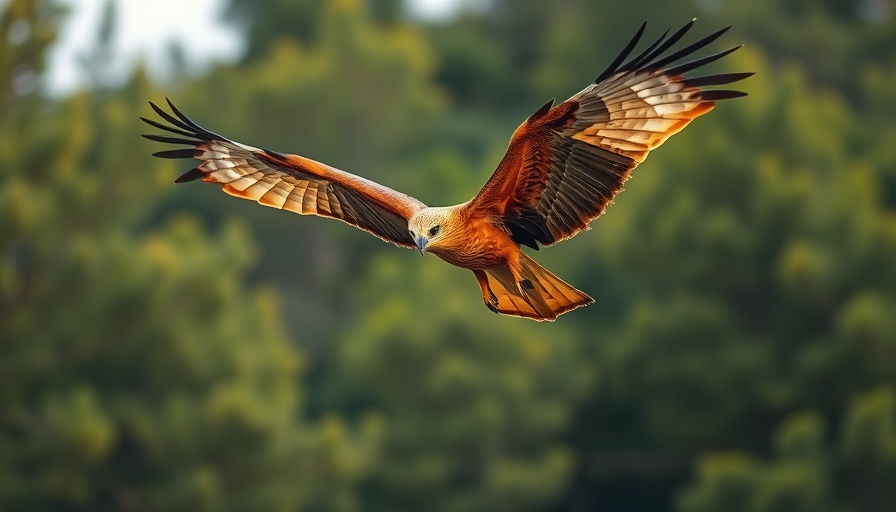
Investigation Launched After Poisoning of Rare Red Kite in Northern Ireland
The recent discovery of a red kite in County Down, Northern Ireland, which died from poisoning, has triggered a serious investigation by the Police Service of Northern Ireland (PSNI). After an unwanted farewell to this magnificent bird, the PSNI confirmed that the cause of death involved a targeted poisoning with dangerous chemicals, specifically rodenticide Chloralose and insecticide Bendiocarb. Both substances are harmful not only to wildlife but could also pose risks to humans.
A Brief History: Resurgence of Red Kites
Red kites were once native to the UK, but they had become extinct in Northern Ireland by the late 19th century. After a successful reintroduction in 2008, these striking birds of prey began to reclaim their place in our skies, symbolizing hope for conservation efforts. Superintendent Johnston McDowell of the PSNI, a lead figure in wildlife crime, expressed his regret over the repeated killings in the same area, highlighting the broader issue of illegal targeting of protected species. The loss of a single red kite is not just a sadness for birdwatchers; it is a verbal indictment of the ongoing risks posed to our ecosystem.
What's Next? The Fight Against Wildlife Crime
Efforts to safeguard our wildlife have become increasingly necessary. The PSNI emphasizes the importance of public awareness and reporting suspicious activities. If individuals come across a dead bird, particularly a red kite or similar species, it is crucial they refrain from handling the body and instead notify the authorities. The partnership between the police and the Department of Agriculture, Environment and Rural Affairs is important, as they seek to identify and prosecute offenders who endanger protected wildlife.
“The intentional poisoning of wildlife and birds is an abhorrent crime, and those found guilty can face substantial penalties,” Superintendent McDowell noted.
The Broader Wildlife Crisis
This tragic incident is a mere reflection of the larger crisis threatening wildlife today. Over the past 50 years, populations of vertebrate wildlife have declined by an alarming 73%. Factors contributing to this decline include habitat destruction due to human activity, pollution from various sources, and climate change effects that disrupt food availability and habitats. The red kite incident underscores the urgent need for a collective commitment to preserve not only cherished species like the red kite but to maintain the delicate balance of our ecosystems.
Engaging Local Communities for Change
Community engagement is vital in combatting wildlife crime. Initiatives such as local wildlife conservation groups and educational programs can play a pivotal role in raising awareness about the importance of protecting our natural heritage. As the desert towns in Northern Ireland and the broader community step up efforts, the story of the red kite can inspire resilience and a proactive approach toward wildlife conservation.
To further support this cause, consider engaging in local environmental advocacy. Connect with nearby wildlife organizations that promote the safeguarding of our natural spaces. By being vigilant and informed, you can contribute to a future where incidents like the poisoning of this red kite are no longer a grim reality.
 Add Row
Add Row  Add
Add 




Write A Comment